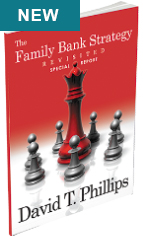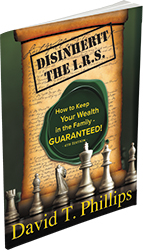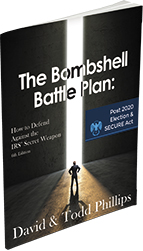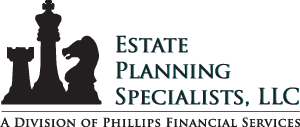
Bob Carlson's - Here’s the Truth About ‘Secret’ Retirement Plans and Personal Bank Accounts

Here’s the Truth About ‘Secret’ Retirement Plans and Personal Bank Accounts
You’ve seen the hype. Now, let’s look at the facts.
There’s a widely promoted estate and financial planning strategy I’m often asked about. It’s been called the Secret 770 Account and the President’s Account. Other names are Banking on Yourself®, Infinite Banking®, LIRP, and Becoming Your Own Banker®. I’ve also seen it described as The Personal Bank, The Power of Zero, and The Retirement Miracle. Ed Slott, CPA and IRA expert, refers to it as “the single most important benefit in the tax code.”
Many of the promotions say the strategy is confidential, new, revolutionary and, of course, Wall Street’s hidden secret. Also, banks and Wall Street don’t want you to know about it, and only a privileged few of the well-connected have been able to use it, such as presidents, major corporations and the very wealthy.
It is true that this strategy has been used by many prominent and well-connected people, as well as major businesses. But it isn’t new, secret or exclusive. It is as readily available to you as it is to major corporations and billionaires. All these promotions describe essentially the same strategy. Periodically, I discuss the strategy and the promotions for it with my friend and estate planning expert, David T. Phillips, CEO of Estate Planning Specialists. We fully understand the strategy the marketers are referring to, and it can be a very good, conservative move for a lot of people. We’re concerned, however, that the over-the-top promotions might turn off people who could benefit from the strategy. They also can mislead people for whom the strategy isn’t appropriate.
Recent events are making the strategy more attractive than ever. People who wouldn’t have considered it in the past should consider the strategy now.
The strategy can be a great way to build your estate and can be an important component of a properly designed estate plan.
You earn safe, steady tax-free returns of 5% to 7% on your cash value investment account, and you don’t have to worry about market risk. You also have tax-free cash available to you and your family whenever it’s needed. In essence, you have a family bank, which is why David calls it The Family Bank Strategy.
I’ll tell you who can benefit from the strategy, when it should be considered, and how to learn more about it. The linchpin of this strategy is cash value permanent life insurance. That’s right, you reap these benefits from a product that’s been around for at least a couple of hundred years when you structure the strategy correctly and follow the rules. Cash value life insurance has been maligned over the years, and some of the criticism is warranted. But things have changed. Permanent life insurance policies now are more favorable to policyholders than in the past.
Unlike term insurance, permanent life insurance doesn’t expire, and the premiums don’t increase as you age. You have a cash value account that earns steady interest, and that interest accumulates and compounds tax-free. You’re unlikely to earn double-digit- percentage returns in the cash value account, but you won’t be subject to investment losses or limited to the fixed 2% returns of the past. Your cash value earns steady, tax-free returns of 5% to 7%. You don’t have market risk. Once you’ve earned a return, the markets can’t take it away.
Taxes are another reason the strategy is valuable to more people these days. After-tax wealth is what counts. Both the death benefit and the cash value account within a life insurance policy are free of income and capital gains taxes. They always have been, and none of the tax increase plans discussed the last few years would change that. If you need cash for any reason, you can borrow tax-free from the insurance company, using your cash value and life insurance benefits as collateral. Depending on the carrier, the cost to borrow currently ranges from 0% to 1%. If a family member needs money, you can make a loan to him or her from the policy. You don’t have to charge interest, and you can forgive the loan later if you want.
The policy loans can be paid back on your schedule or no schedule at all. When loans aren’t repaid, the unpaid loans reduce the death benefit paid to your beneficiaries. The life insurance benefit is a key part of the Family Bank Strategy because it’s eventually passed to your loved ones or charity income tax-free. Within IRS limits you can, if you want, minimize the death benefit and increase the rate at which the cash value account grows over the years.
The Family Bank Strategy is creditor- proof. Your investment and income are backed by an insurance company. Most insurers are over 100 years old. They have survived and thrived through the world’s most difficult financial crises.
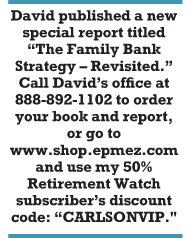
Life insurance doesn’t have contribution limits and doesn’t require you or your heirs to take minimum annual distributions, as an IRA does. Who should consider the Family Bank Strategy as part of an estate plan? One good candidate is someone who’s keeping money in conservative investments as a reserve. It’s not money that’s designated for regular living expenses. Some of this money could be transferred into permanent life insurance to establish a Family Bank. Another good candidate is someone with a large IRA, either a traditional or a Roth IRA.
Distributions from a traditional IRA are taxed, and you’ll be required to take minimum distributions after age 72. Most beneficiaries who inherit a traditional IRA will be required to fully distribute and pay taxes on the IRA within 10 years after inheriting it. The days when most IRA beneficiaries could let an inherited IRA compound for decades (known as a Stretch IRA) are gone.
The family’s after-tax wealth could increase significantly if money is taken out of the traditional IRA today, the taxes paid, and the after-tax amount put in permanent life insurance. The earnings on the cash value will accumulate tax-free and can compound for the rest of your life. If money is needed, it can be taken from the cash value account as tax-free loans. Eventually, your beneficiaries inherit the life insurance benefit tax-free.
This strategy is especially good when you convert only enough of your IRA to bring your taxable income to the maximum level of your tax bracket. For example, a couple earning $150,000 will be in the 24% federal income tax bracket until their income reaches $340,100. They could move $190,000 annually from the IRA into the Family Bank Strategy and stay in the 24% bracket.
The life insurance benefit will always be worth substantially more than the money you transferred into the policy. Unlike an IRA, investment markets won’t cause the cash value account or the insurance benefit to decline. If your loved ones inherit a traditional IRA, they’ll really inherit only the after-tax balance, and that value will change with the markets and tax rates.
Even a Roth IRA owner who primarily intends for loved ones to inherit the account might benefit from the Family Bank Strategy. Either the Roth IRA or the life insurance benefit would be tax-free when inherited. But the life insurance benefit would be substantially higher than the initial Roth IRA balance. There’s no investment risk with the insurance policy, and you have tax-free access to cash through loans from the policy. Most beneficiaries who inherit a Roth IRA will be required to distribute the entire balance within 10 years. But they can do whatever they want with the life insurance benefits. Someone who still is working and has excess cash flow also should consider using the Family Bank Strategy. The strategy might be the best use of some of the savings, especially when the maximum amounts have been contributed to 401(k)s and IRAs.
Consider this example. Max Profits, age 60, is in good health and transfers $200,000 into The Family Bank Strategy. His deposit generates a life insurance benefit of $715,000, so he’s increased the value of his estate by $515,000. His cash account at the end of the first year will be $195,644 and will grow to $262,251 in 10 years and $374,799 in 20 years, assuming 5.74% interest. The formula used in this example to credit the cash value account has an average annual 30- year return of 5.74%.
There are four general types of permanent life insurance and many variations of each. For the Family Bank Strategy, you only want to consider Participating Whole Life or Indexed Universal Life. There’s a vigorous debate among insurance professionals who implement the strategy over which type of policy to use. You need to know the arguments on each side and decide which is best for you.
That’s why David Phillips wrote and published “The Family Bank Strategy,” a book that does an excellent job of setting the record straight and explaining the options and choices. David explains 17 positive features of The Family Bank Strategy and lists 10 factors that make it one of the premier safe money strategies today. It’s available on Amazon for $24.95, but David is making it available to my readers for $9.95, which includes shipping and handling. David also published a new special report titled “The Family Bank Strategy – Revisited.” Call David’s office at 888-892-1102 to order your book and report, or go to www.shop.epmez.com and use my 50% Retirement Watch subscriber’s discount code: “CARLSONVIP.”
Don’t be turned off by the phony hype about secret strategies or the negative attitudes about permanent life insurance. For many readers, the Family Bank Strategy is a way to lock in the value of your estate for loved ones, earn a solid tax-free return on your cash value and have tax-free access to the capital when you need it. It can play an important estate planning role in increasing your family’s after-tax wealth.

